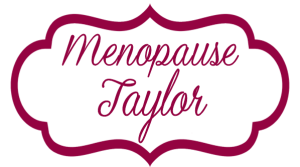What’s All the Hype About With Phytoestrogens?
Have you ever gone to a “health food” restaurant and discovered that they don’t serve tofu because it has estrogen in it? And when you ask them to explain, they say phytoestrogens can be dangerous!
Have you ever gone to a grocery store and found all sorts of soy meat and dairy substitutes touted as being better for you than the real meats and dairy products that contain animal hormones? They say phytoestrogens are good for you!
Why the mixed messages? What’s all the hype about?
Phytoestrogens!
Are they good for you or are they bad for you? Do they raise your estrogen level or do they lower it? Do they cause cancers or prevent cancers? One day you hear one claim and the next day you near another. What’s the truth about phytoestrogens?
“Phytoestrogens” are plant sources of estrogen. “Phyto” means plant. And “estrogen” means estrogen. So phytoestrogens are plants that have estrogen in them. And they’re everywhere.
The most significant dietary phytoestrogen sources are tofu, tempeh, soy beans, garbanzo beans, soy protein powders, soy milk, soy yogurt, soy cheese, and soy ice cream. But would it surprise you to learn that flaxseeds, red clover, pumpkin seeds, sunflower seeds, cranberries, black tea, green tea, garlic, broccoli, bran, bean sprouts, and peanuts are also sources of phytoestrogens?
Ahh, are you starting to ruminate on how much of these phytoestrogens you eat regularly? Are you feeling an inkling of panic that you might be getting too much estrogen? Or are you thinking, “Well then why in the heck am I still having so many hot flashes?”
Do you wonder why you get so many mixed messages about the effects of phytoestrogens?
Here’s why: It’s because most people only know half the story. And when you only know half the story (about phytoestrogens or anything else), you make irrational decisions based on irrational information. My goal is to give you the facts … all of them. And then you can decide for yourself how to act on those facts.
Phytoestrogens are a “natural” form of estrogen that exists in nature in the form of plants. But not all estrogen is created equal. Human estrogen is the natural form of estrogen that exists (or used to exist) in your body. And as it turns out, plant estrogen and human estrogen are two completely different animals so to speak.
Here’s how they differ:
Within our bodies, all hormones are useless until they bind to a “receptor site.” A receptor site is nothing but a parking spot for a hormone. Until the hormone parks in a receptor site, it floats around doing nothing.
When it comes to estrogen, phytoestrogen has to compete with human (and pharmaceutical) estrogen for a parking spot. And which one gets the spot depends on something called “affinity.” Affinity is nothing more than attraction between the parking spot and the hormone. (It’s kind of like sexual attraction.) As it turns out, human estrogen and pharmaceutical estrogen are much more attracted to the parking spots for estrogen than phytoestrogen is. How much more attracted? 1,500 – 11,000 times more attracted! That means, it’s 1,500 – 11,00 times more likely that a human or pharmaceutical estrogen will park in an estrogen parking spot and get activated than a phytoestrogen will. That’s quite a difference.
What this means is that it’s very unlikely that phytoestrogens will have an opportunity to exert any effect at all if you have human or pharmaceutical estrogen in your body.
But that’s not the whole story.
Phytoestrogens are also much weaker than human and pharmaceutical estrogen online gabapentin. How much weaker? They’re only 1/100th to 1/1000th as strong as human and pharmaceutical estrogen. So what does that mean? It means that if a phytoestrogen does get the parking spot, the effect it will have is 100 to 1000 times weaker than the effect human or pharmaceutical estrogen would have. It means that you’d have to eat mass quantities of phytoestrogens (if that’s even possible) to even begin to get an effect equal to that of human estrogen.
But that’s still not the whole story.
What determines whether the phytoestrogen or the stronger estrogen will get the parking spot?
Well, it all depends on how much estrogen there is in your body already. If you have little or no estrogen, there’s a high likelihood that a phytoestrogen will get the parking spot. Alternatively, if you already have a lot of estrogen, there’s a low likelihood that it will.
This makes sense, right? If the weak phytoestrogen has to compete with the strong guys (human or pharmaceutical estrogen), it’s unlikely that it will beat them to the spot.
But that’s not the end of the story.
We haven’t considered what happens if a phytoestrogen does get the parking spot. This is my favorite part! Again, it all depends on how much estrogen you have in your body.
If you have little or no estrogen, a parked phytoestrogen will increase your estrogen levels very slightly. Remember, it’s really weak, so it can’t make much of an impact. But a weak estrogen effect is still going to be more than you had before.
But if you already have a lot or too much estrogen, a parked phytoestrogen will decrease your estrogen level because it has stolen the parking spot from the stronger guy.
So the bottom line with phytoestrogens is that they’re extremely weak, and unlikely to get a parking spot so that they can exert any effect at all. And if they do get the spot so that they can exert an effect, the effect will be determined by whether your estrogen level is high or low. If it’s low, phytoestrogens will raise it; if it’s high, phytoestrogens will lower it.
Now, that’s the end of the story.
The end.
This article, written by Dr. Barbara Taylor, was first published on http://justvibehouston.com/, on Januaray 16th 2017.


